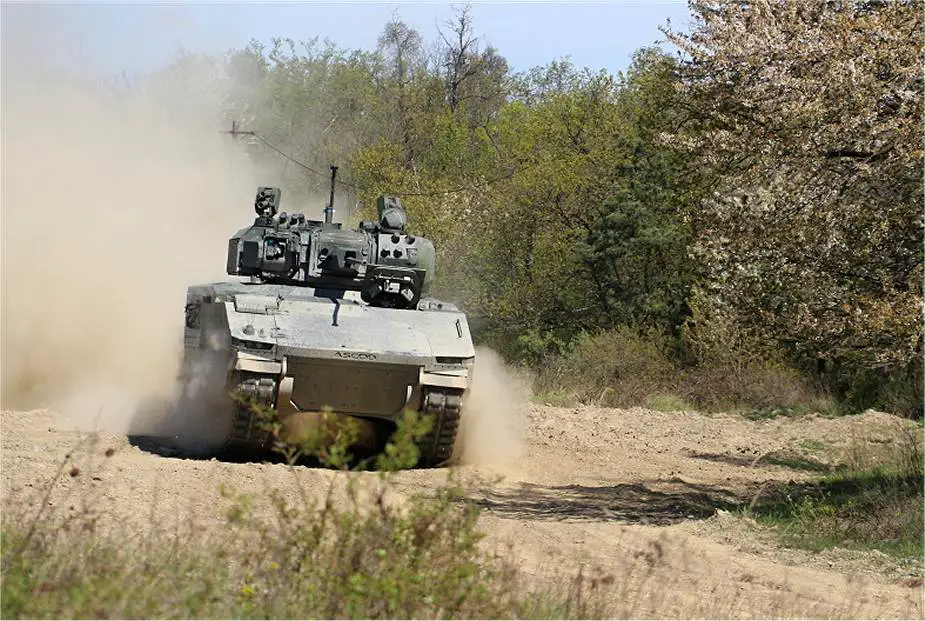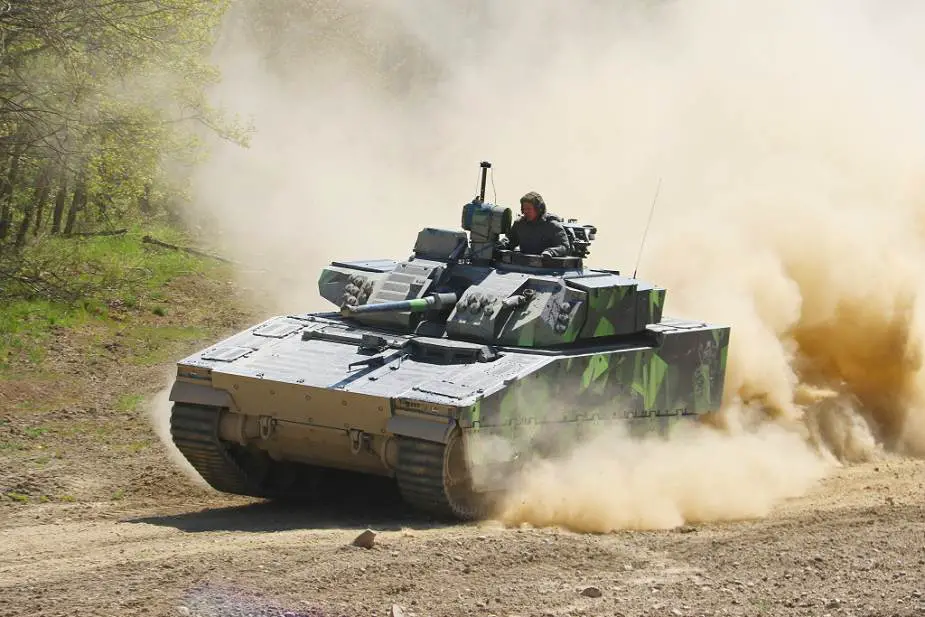The Czech army conducts field tests with the three new tracked armored IFVs (Infantry Fighting Vehicles) candidates to replace the old BVP-2 IFV, a Soviet-made BMP-2 manufactured under license in the Czech Republic. During six weeks, Czech soldiers of the 72nd Mechanized Battalion will test three new IFVs including the ASCOD from General Dynamics, the Lynx from Rheinmetall, and the CV90 from BAE Systems.
Follow Army Recognition on Google News at this link

The three candidates for the new Czech Army Infantry Fighting Vehicle program including the CV90 Mk IV, the Lynx KF41, and the ASCOD. (Picture source Czech MoD)
The Czech Republic plans to acquire 210 new tracked armored IFVs (Infantry Fighting Vehicles) to modernize its armed forces. This contract will reach an amount of $2.2 billion. In December 2018, Czech Defense Ministry announced the four candidates shortlisted for one of the biggest defense tenders of the Czech Republic to acquire a new tracked armored Infantry Fighting Vehicle (IFV).
In October 2019, the Czech Ministry of Defense has announced that only three companies submitted bids to supply new tracked armored infantry fighting vehicles (IFVs) including General Dynamics European Land Systems with the ASCOD, BAE Systems with the CV90, and Rheinmetall with the Lynx.
Now the three IFVs candidates will be tested according to almost thirty Czech Army requirements. Ballistic and mine protection, protection against IEDs (improvised explosive devices), active protection, and vehicle mobility have already been tested.
The new IFVS will be tested on the field by Czech army soldiers regarding the combat capabilities of the vehicle including the possibility to carry wounded soldiers, the storage capacity of ammunition as well as the internal design for the infantrymen, the use of escape hatches, and more.

ASCOD from GDELS General Dynamics European Land Systems. (Picture source Czech MoD)
The ASCOD (Austrian Spanish Cooperation Development) is a family of tracked armored vehicles produced under a cooperation agreement between Austrian Steyr-Daimler-Puch AG and Spanish General Dynamics Santa Bárbara Sistemas, both are now subdivisions of GDELS (General Dynamics European land Systems). In 2004, GDELS has unveiled an improved version of the ASCOD.
The ASCOD was selected by the British MoD (Ministry of Defense) under the name of AJAX to replace the CVRT light reconnaissance vehicles of the British Army. The ASCOD new generation has been designed as a modular platform that can be configured for different types of missions. It can be configured in APC (Armored Personnel Carrier), IFV (Infantry Fighting Vehicle), and many other variants.
The modular design means the platform can be tailored to a customer’s specific needs and requirements. With different payload capacities and growth potential and its alternative powerpack and running gear, ASCOD offers a wide range of configurations that cover all the major roles of an Armored Fighting Vehicle, Armored Personnel Carrier APC, Command Post, Forward Observer, Repair, Recovery, Engineering, howitzer, light Tank or bridge launcher and can integrate all types of turrets and weapon systems up to 120 mm cannon.

CV90 Mark IV from BAE Systems (Picture source Czech MoD)
In 2018, BAE Systems has unveiled an improved version of its CV90, tracked armored IFV under the name of CV90 MK IV offering more mobility, protection, and firepower. The vehicle is also fitted with an upgraded Electronic Architecture to support future growth capabilities.
The CV 90 Mark IV has been designed to be fitted with a wide range of manned and unmanned weapon stations which can be armed with different types of armament, from 30/40-mm and 35/50-mm automatic cannons up to 120-mm smooth-bore tank cannon.
The layout of the latest generation of CV90 is very similar to the first variant with the driver seated front left of the hull, the turret mounted in the center and the troop's compartment at the rear. The armor of the CV90 provides all-around protection against firing of small arms up to 14.5mm caliber and artillery shell splinters, but the vehicle can be fitted with armor to increase protection against 30 mm APFSDS (Armor-piercing fin-stabilized discarding sabot) ammunition.

Lynx KF41 from Rheinmetall (Picture source MoD)
The Lynx is a new generation of tracked armored vehicles designed and manufactured by the German company Rheinmetall. The vehicle was launched in June 2016 during Eurosatory, a defense exhibition that was held in Paris, France.
The Rheinmetall Lynx is available in two versions including the KF31 and KF41 (KF stands for "Kettenfahrzeug", or tracked vehicle in German). Weighing up to 38 tones, Lynx KF31 can seat 3+6 soldiers. Lynx KF41 is slightly larger and can carry 3+8 soldiers. The two Lynx vehicles can be configured for various roles as IFV (Infantry Fighting Vehicle), Command and Control vehicle, armored reconnaissance, ARV Armored Recovery vehicle and ambulance.
In August 2020, Hungary and Rheinmetall Group signed a contract to start manufacturing the Lynx infantry fighting vehicle family in Hungary. The contract includes the delivery of 218 Lynx infantry fighting vehicles fitted with Rheinmetall's manned 30mm Lance turret. The vehicle is also one of the candidates for the Australian army Land 400 Phase 3 program to replace the old M113As4 tracked APC (Armored Personnel Carrier).
In October 2018, Rheinmetall announced a teaming with Raytheon to propose the Lynx KF41 to the U.S. Army in answer to its developing Next-Generation Combat Vehicle program, this slated to replace the Bradley Fighting Vehicles and other current platforms.















